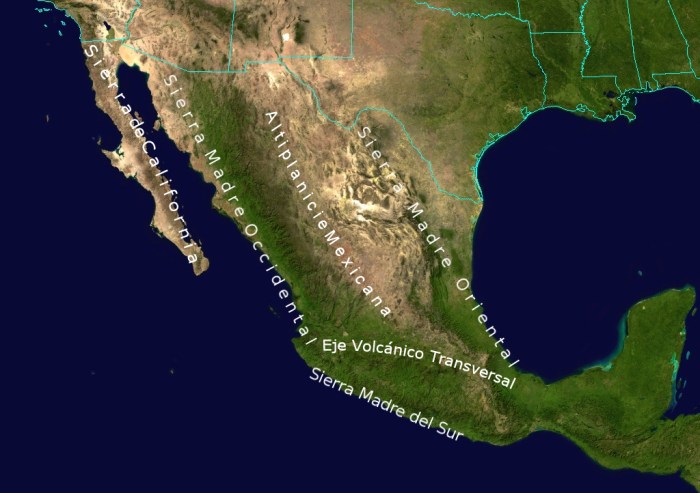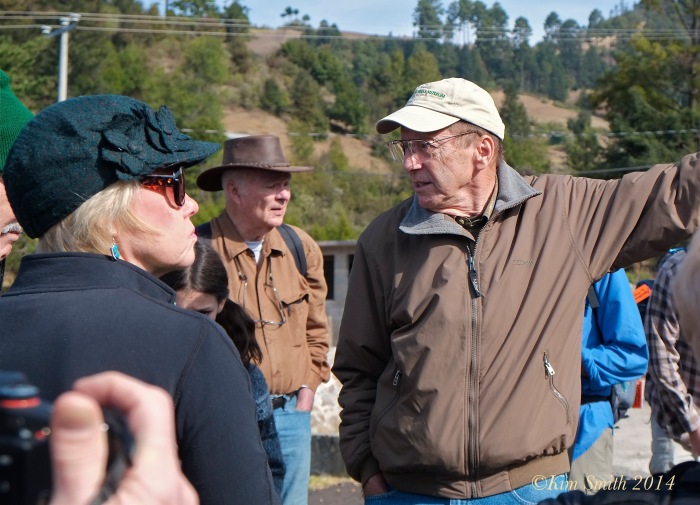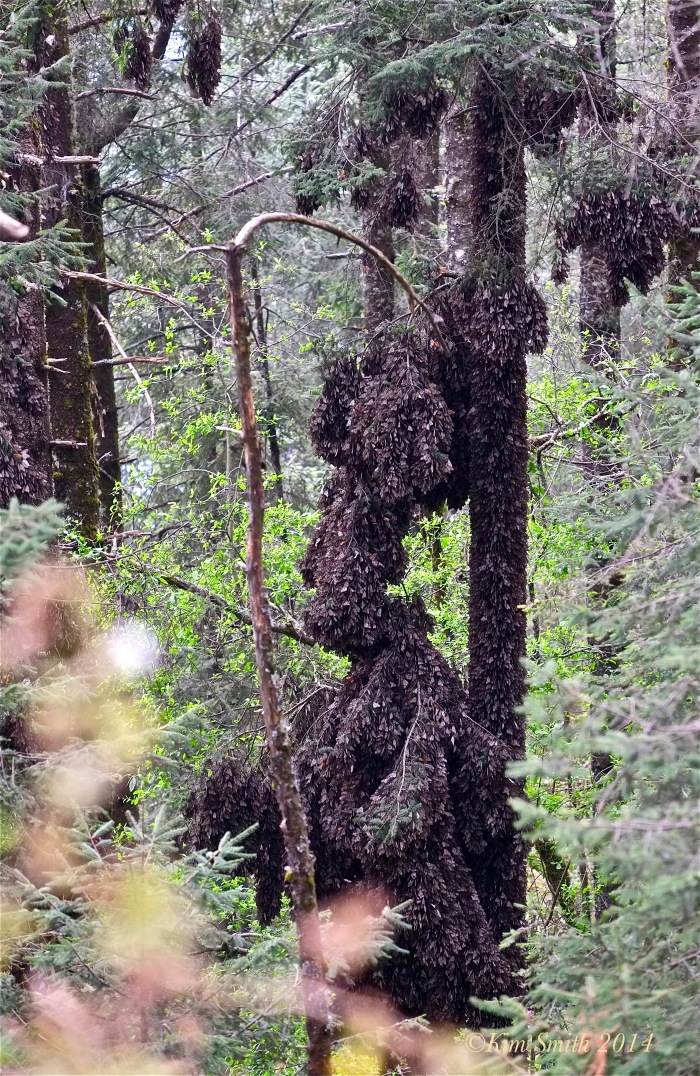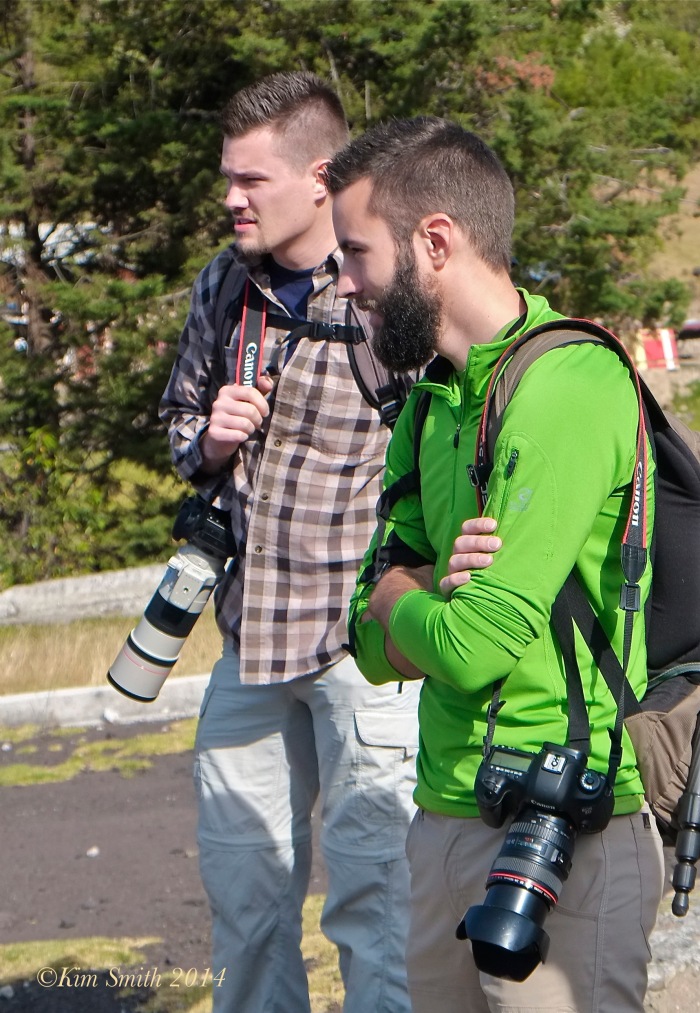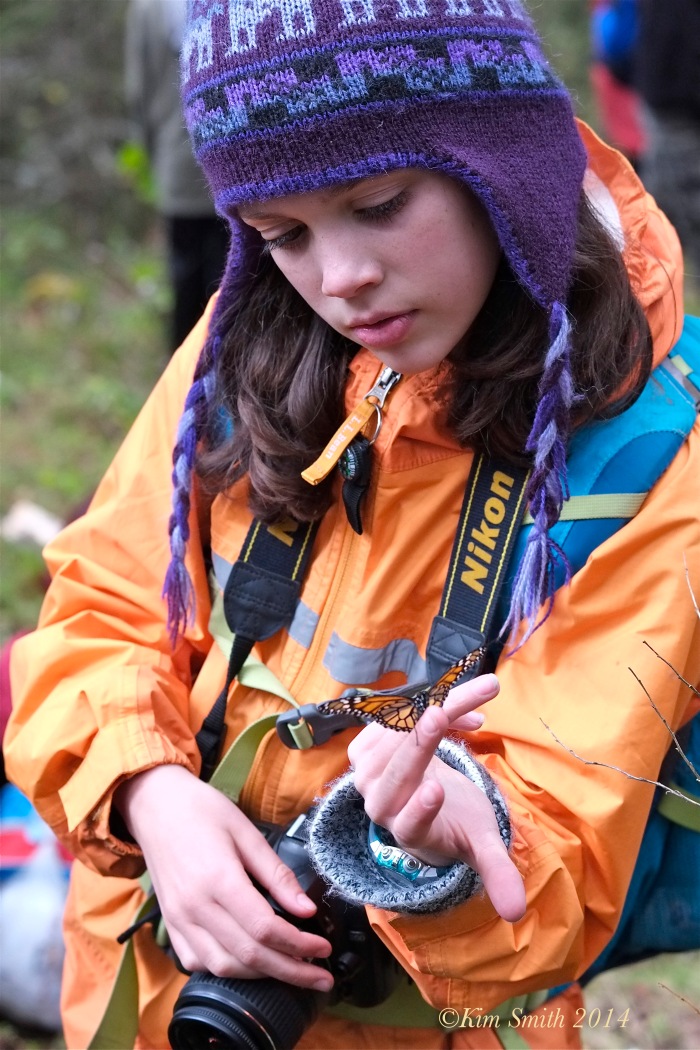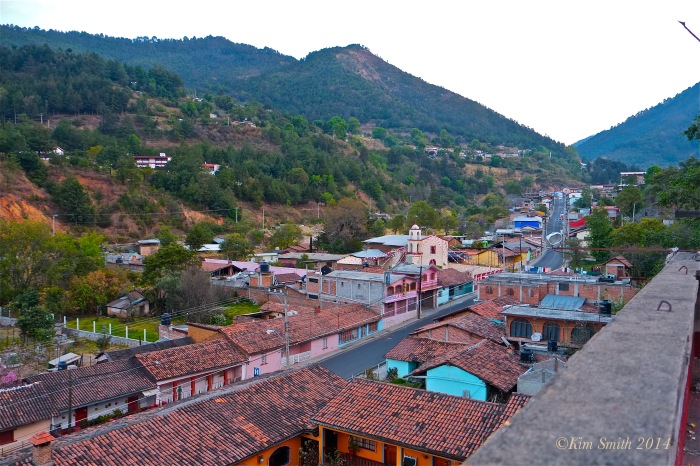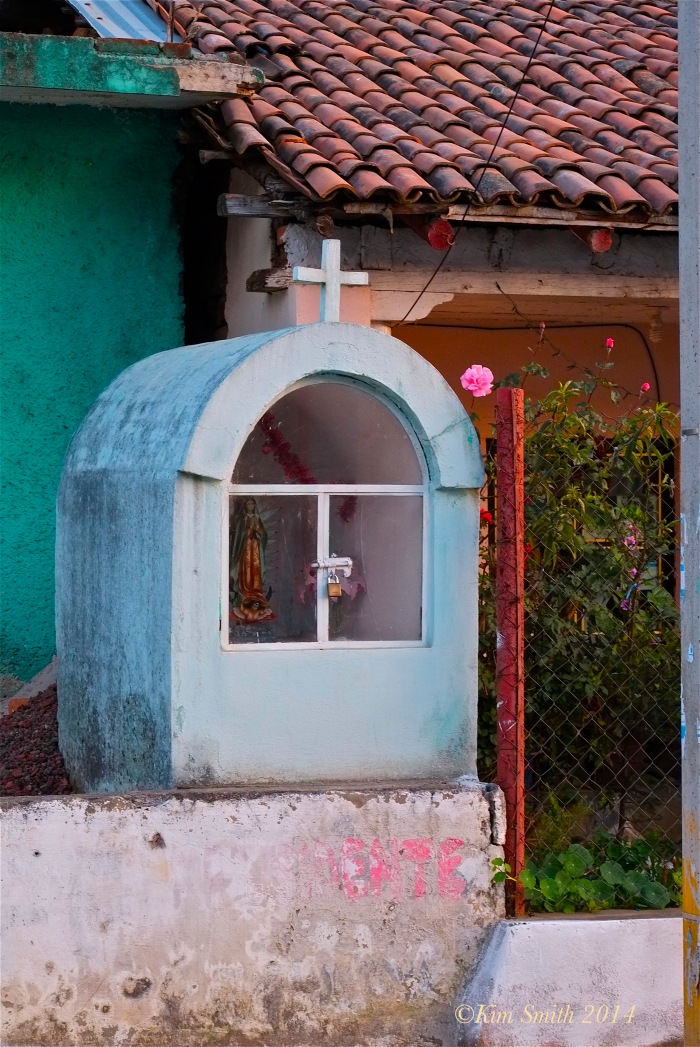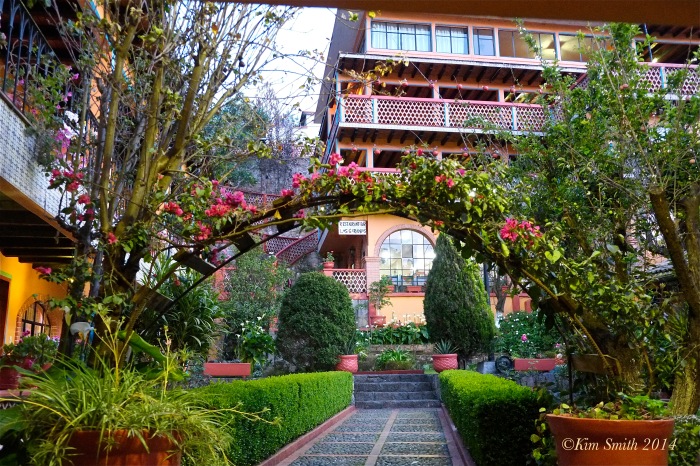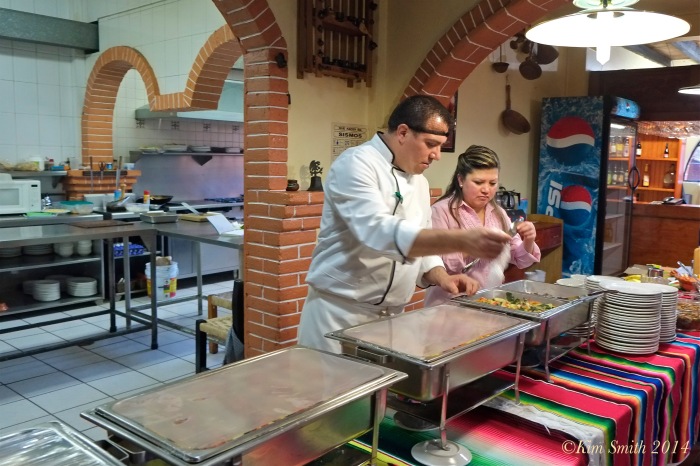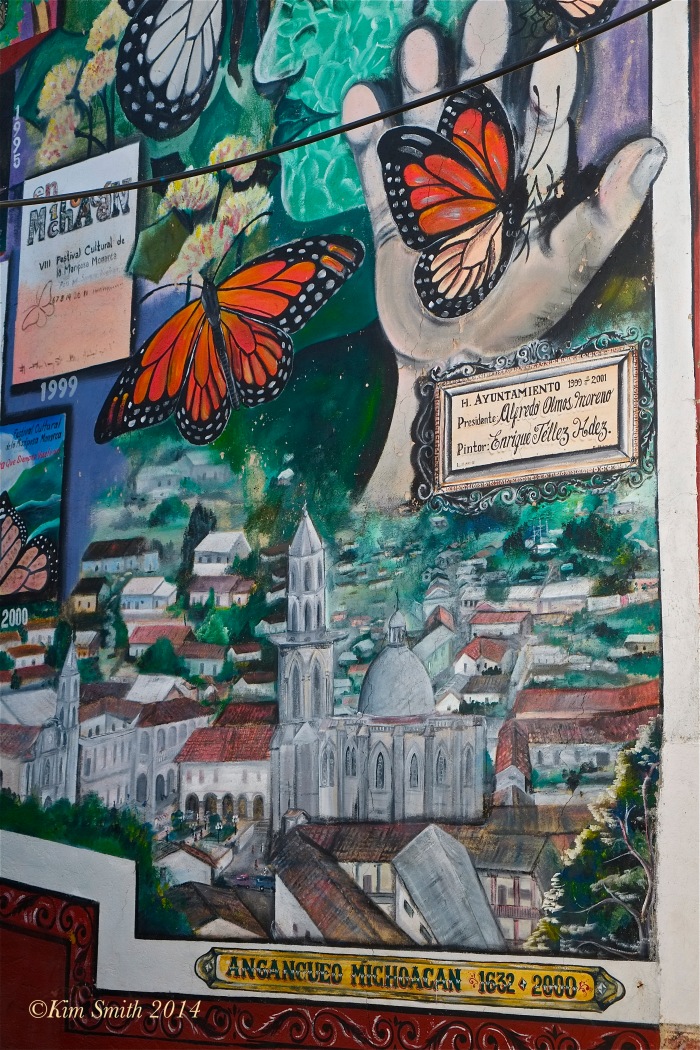Ribbons of orange butterflies are stopping to roost overnight all along the Gulf Coast of Florida’s Panhandle. These Monarchs are primarily members of the Atlantic Coast population. Because these Monarchs live for about seven to eight months, they are often referred to as a super generation of Monarchs, and are also known as the Methuselah Monarchs. They will continue along the Gulf Coast, soon joining the steady stream of Monarchs migrating through the central part of the US to cross the great Central Mexican Plateau (Altiplanicie Mexicana).
The Plateau is bordered by the Sierra Madre Occidental to the west and the Sierra Madre Oriental to the East. The Plateau ends where the Trans-Mexican Volcanic Mountains begin, forming a natural barrier, which prohibits further migration. The butterflies roost in the beautiful pine-oak forests of the Eje Volcanico Transversal.
 The Atlantic Coast Super Generation of Monarchs, otherwise known as Methuselah Monarchs, Gloucester 2019
The Atlantic Coast Super Generation of Monarchs, otherwise known as Methuselah Monarchs, Gloucester 2019
 Monarch Butterfly overnight roost Gloucester 2019
Monarch Butterfly overnight roost Gloucester 2019
The Monarchs are arriving to Mexico in ever increasing numbers. Colonies have yet to form, but that is not unusual for this time of year. Below are reports from Mexico from two of the butterfly sanctuaries where I filmed “Beauty on the Wing.” Ellen Sharp, along with her husband Joel Moreno Rojas, founded the nonprofit organization Butterflies and Their People, located at Cerro Pelón, Macheros. Estela Romero is Journey North’s program coordinator for Mexico and writes from her home in Angangueo, Michoacán.
From Macheros, MEX:
Ellen submitted this report: “From 1:08–1:24 pm on October 31, 2019 we spotted at least 54 determined little specks pumping their way across the sky. Meanwhile up on the Carditos side of, the Butterflies & Their People guardians sighted many more. Starting at 12:16 pm, Leonel and Francisco counted an average of eight per minute for the next ten minutes. Ever since that day, the skies have been filled with monarchs flying overhead until the afternoon rains arrive. We have yet to hear any news of colony formation on Cerro Pelon.” (10/31/2019)
 Ellen and Joel, co-founders of Butterflies and Their People, also co-own JM Monarch Butterfly B and B, located in Macheros.
Ellen and Joel, co-founders of Butterflies and Their People, also co-own JM Monarch Butterfly B and B, located in Macheros.
Regardless of bad weather with rain, fog and dark clouds covering the sky for almost three weeks, Monarchs found no obstacle and poured down from the sky to attend to their ancestral encounter with incredible accuracy on the October 31st and November 1st.
“There they come”, “down to the bottom to town those go”, “up they just lifted flight”, “over there many more”, students, Emilio, Fernanda, Kevin and Diana, shouted. The monarchs were migrating through the valley. Monarchs do their triumphal entrance and last flying performance before they make their choice and split to their final destination at the unique Oyamel tree spots in the Sierra Madre mountains of “El Rosario” and “Sierra Chincua”, in Central México, two of the three main Sanctuaries at the region.
Monitoring map kept by students shows how the numbers of monarchs suddenly rose to hundreds!
Our legendary Mathusalen Generation of Monarchs, the Daughters of the Sun, have been, since ancestral times, the symbol of the after-life world of our ancestors and recently dead close relatives — the Miktlan dimension. Our indigenous groups show deep understanding of the relationship between life and death. Monarchs are the connection of this mystic relationship between life and death.
“At last their souls appear shaped as orange and black beautiful energetic butterflies coming to all of us families, after longing for their arrival all year long; our memories will always prevail upon their absence; they will always be among us; not invoking their lives and our time together would be really letting them die and forgotten, no, never”, murmur parents and grandpas as they hod their children and grandchildren by their hands in the streets of the town.
“We all gather around our Ofrendas at home and even in public open sites. Each ofrenda may have from 2 levels, which represent heaven and earth, up to 7 or even 9 levels, each one a different dimension that the soul of our dead ones (the Tonali) will go through before reaching the Miktlan dimension”, explained elementary school teacher, Margarita. The Ofrenda is a collection of objects placed on a ritual display during the annual and traditionally Mexican Día de Muertos celebration.
“Each Ofrenda shall contain all favorite meals, drinks, objects, garments, and tools or utensils symbolizing our ancestor’s lives, preferences, enjoyment and ordinary living”, Víctor, Pamela and Juan explained as they gave their finishing touches to their beautiful Ofrenda.
“The colorful papel picado is exclusively sold at this time of the year for the decoration of our Ofrendas; the Zempatzúchitl flower’s (Marygold) fragance shall guide the spirits of our ancestors to reach home; candle lights meaning light, hope and faith, shall also help them come home and then go back to their Miktlan world; our moms and grandma’s assisted by the rest of the family shall cook our dead ones’ favorite dishes in advance for this day; salt and water are main components of an Ofrenda, meaning relieve to thirst and hunger to the visiting spirits; all kinds of drinks, fruit and our delicious “Pan de Muerto“ shall be included too. Tortillas, tamales, atole, tequila, mezcal andcerveza are indispensable in any Ofrenda; finally, at the very top, the photo or photos of our dead relative(s) to whom honor the Ofrenda has been set”,explained Ceciia, a middle school student, wearing her beautiful Catrina costume.
The Alebrijes also symbolize the Day of the Dead. The Alebrijes are bright, colorful, fantasy cardboard cutouts of creatures which are mixtures two or more animal body. The Alebrijes is part of our Mexican culture which has hit the international screen in films like Coco. The Alebrije’s role is to guide the spirits of our dead ones to earth and back to the Miktlan underworld once their two-day visit is over.
“Our ancestors spirits shall share with us a big, big fest while we sing their favorite songs, play their favorite music, tell unforgettable anecdotes and memories and fill our homes with colour, flavors and joy to know that they shall be always among us and never gone from home and from our families”, teacher, Nacho, explained as he described the Ofrenda to the dead miners in town. Nacho is featured in the photo and shows how our town, Angangueo, was historically a mining town with mining the main employment for most families many decades ago.
Walo, a teacher who dressed up as Catrín, and Catrina Magali showed two different Ofrendas to our Monarch butterflies, souls of our dead ones, as the main symbol of these unique festivities in our region and all over our country as the ever living spirits of our dead ones.
As the festivals and the celebratory meals are over and our cemetery is dressed up to greet the monarchs as our ancestors, lets turn down our voices and let us be still and silent as we wait to see at least one single Mathusalen Monarch arrive; let us all children and families from our three host countries, Canada, United States and México stand hand-in-hand while sharing our wonderful responsibility and our ancestral, unbreakable link among our three nations, while watching great-great-grandchildren Monarch pouring down as if from the heavens to our majestic mountains where they will see the exact Oyamel tree where their great-great-grand parents overwintered the season before — and without having been to México before this week!
Estela Romero
Angangueo, Michoacán, México
Noviembre, 2019
Above three photos are by Estela Romero
Monarch colony Cerro Pelon, March 2019

